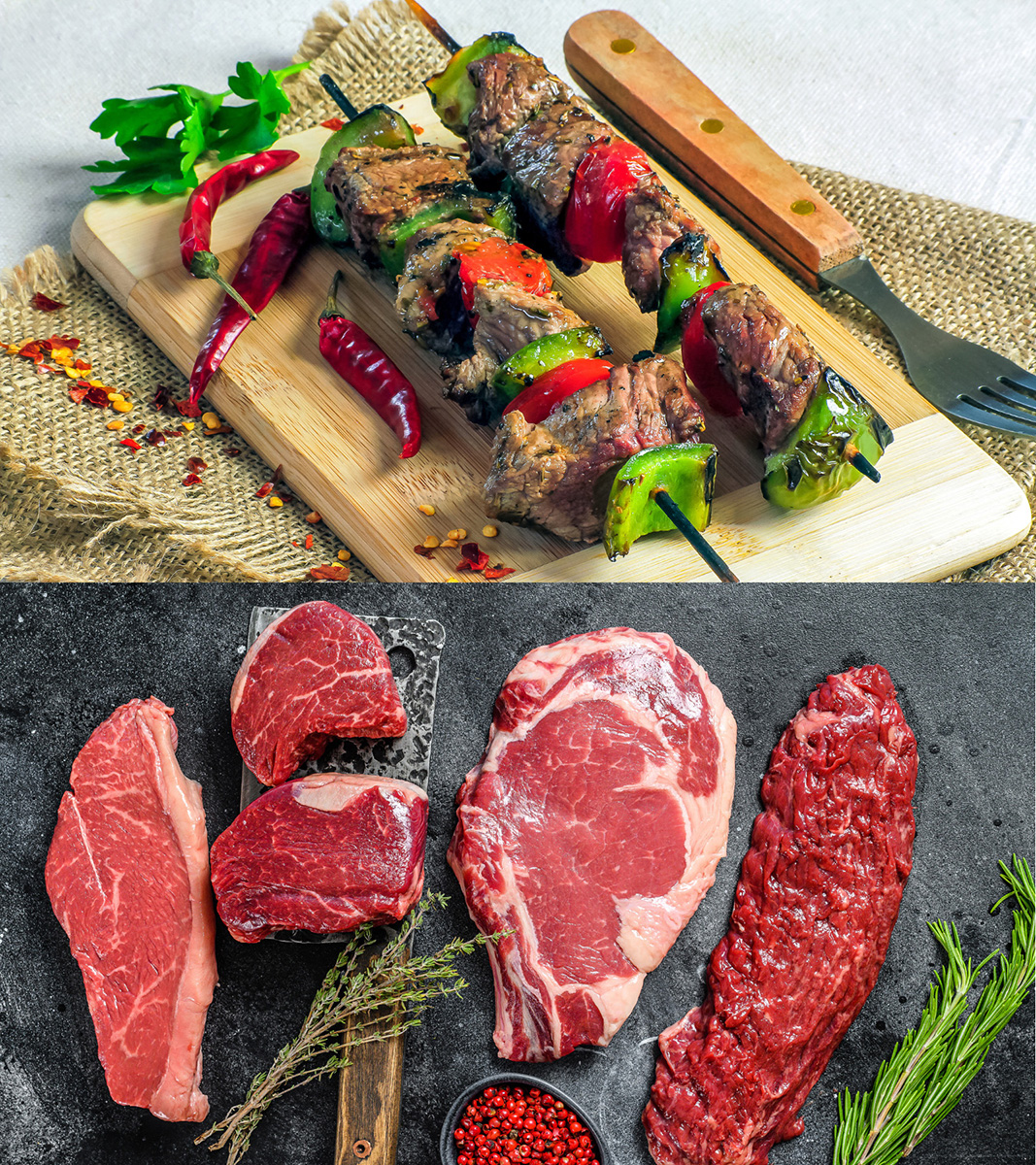
By Kayla Colgrove, MS, RDN, ACSM-CPT, Extension Educator in Lancaster County
Beef is packed with 10 essential nutrients your body needs; such as protein, iron, zinc and B vitamins. These nutrients help with preserving and building muscle, carrying oxygen in red blood cells, maintaining a healthy immune system, brain function and supporting energy production and metabolism. To help celebrate National Beef Month, I would like to share how to make beef healthier, less expensive and a delicious choice for your next meal.
CHOOSE LEAN BEEF
Lean beef can be a part of a heart-healthy lifestyle when keeping portion size in mind, trimming visible fat, preparing in healthy ways and pairing with vegetables, fruits and whole grains. Choose lean beef with “round” or “loin” in the name and enjoy a 3-ounce serving, which is about the size of a deck of cards.
BUDGET FRIENDLY CHOICES
Great ways to reduce the cost of beef are watching grocery store sales, purchasing the family-sized or value pack and freezing what you don’t use. Check out these affordable choices:
• Ground Beef — Versatile and beef’s most popular item. Choose 93% lean or leaner most often. Ideal for burgers, casseroles, pasta dishes or tacos.
• Sirloin Tip Steak — Great value for a lean cut. Ideal for stir fry, fajitas, kabobs, stew meat or cubed steak.
• Sirloin Tip Roast — Great value for a lean cut. It is best to roast and carve into thin slices.
• Eye of Round Roast — A lean cut that is mostly used for roast beef at the deli but can be roasted or slow-cooked at home.
• Chuck Eye Roast — Also known as America’s Beef Roast. A good value with lots of flavor. Roasting highlights flavor and natural tenderness.
BEST WAY TO COOK BEEF
There are many ways to cook beef such as grilling, roasting, stir-frying or slow-cooking. The best cooking method will depend on the cut of beef and your personal preference. Depending on the cut of beef, marinating beef can add flavor and/or help tenderize it. It's important to cook beef to the appropriate internal temperature to ensure it's safe to eat. Use a food thermometer to make sure ground beef reaches 160°F and steaks and roasts reach 145°F with a 3-minute rest time. Learn more about the variety of cooking methods and which is recommended for each cut at https://beefitswhatsfordinner.com/cooking.
Beef is also a great option for leftovers. Leftovers help save money and reduce food waste. Here are some tips for using leftover beef:
• Make a beef stir-fry with vegetables and rice.
• Shred beef and add to a salad or wrap.
• Use beef in a soup or chili.
• Make beef quesadillas or tacos.
• Use beef in a pasta dish.
Sources:
• https://www.beefitswhatsfordinner.com/nutrition/beef-nutrients
• https://www.beefitswhatsfordinner.com/nutrition/beef-and-heart-health
• https://www.beefitswhatsfordinner.com/cuts/collection/33335/affordable-beef-cuts-for-families
• https://www.beefitswhatsfordinner.com/cuts/collection/33359/lean-beef-cuts